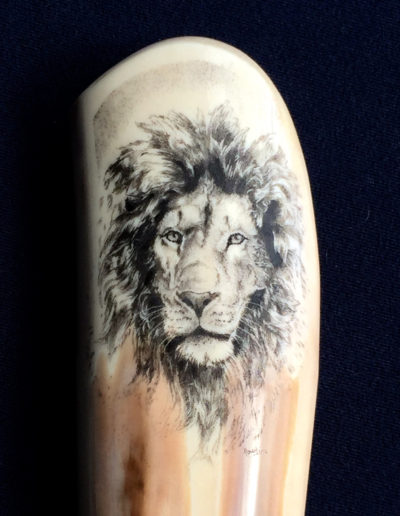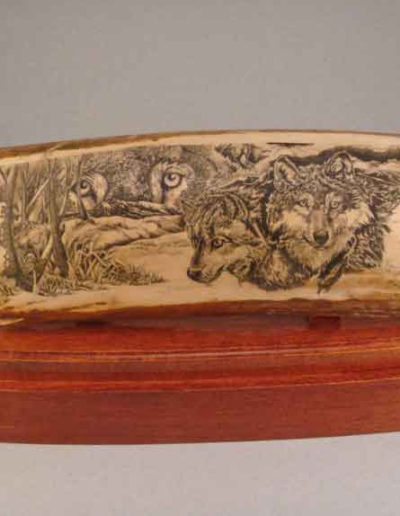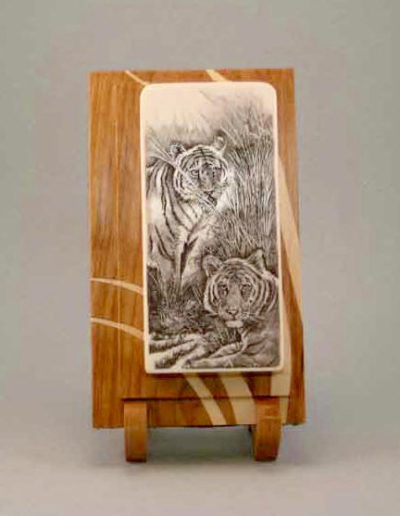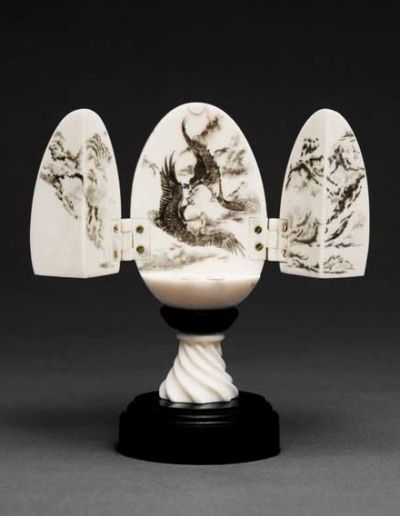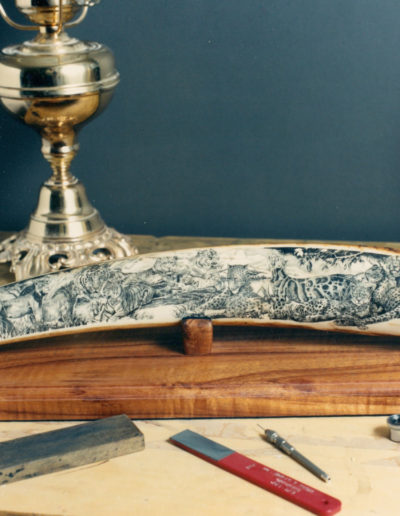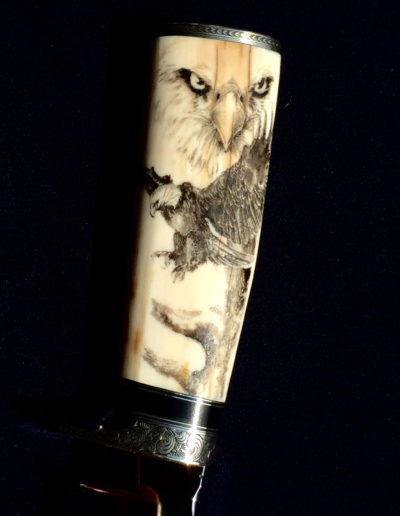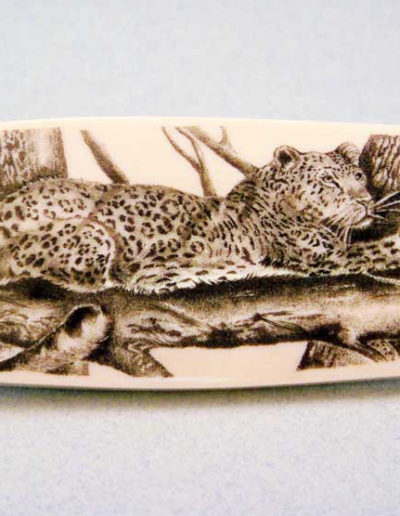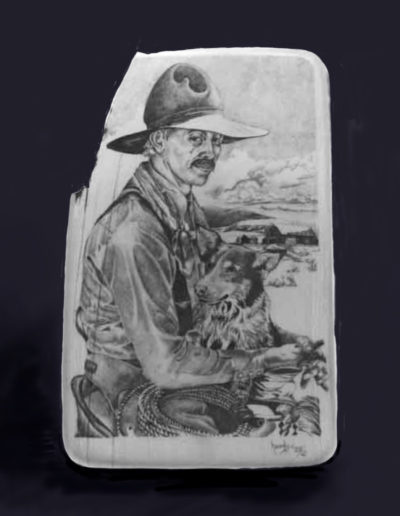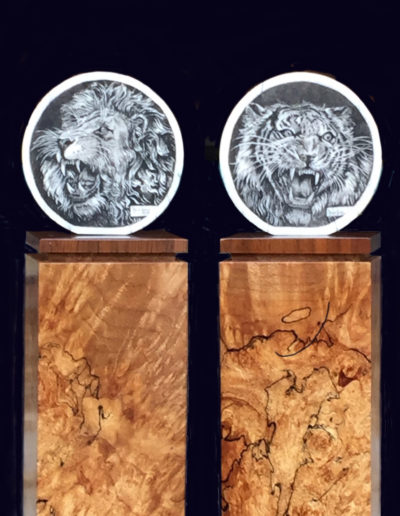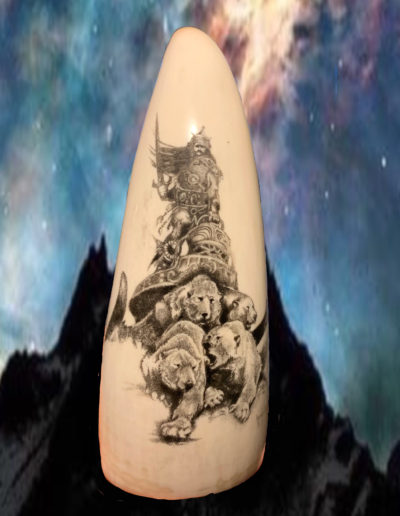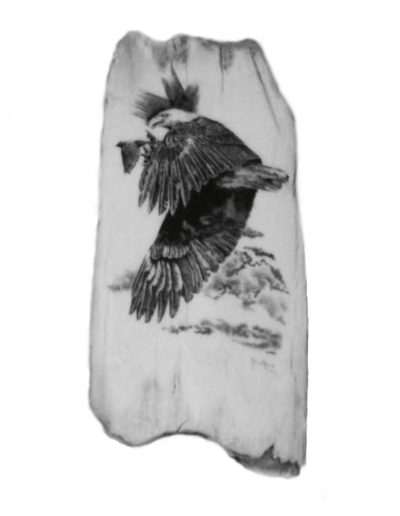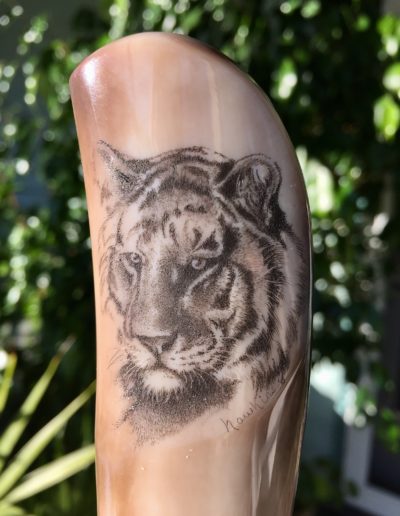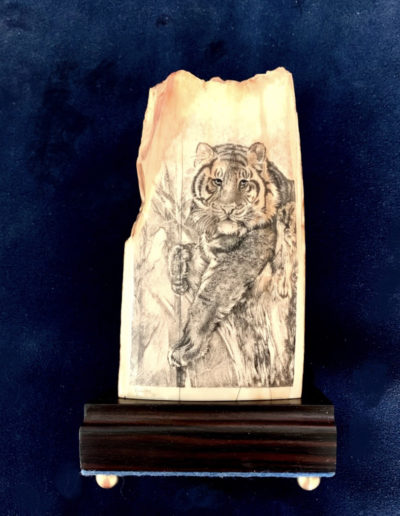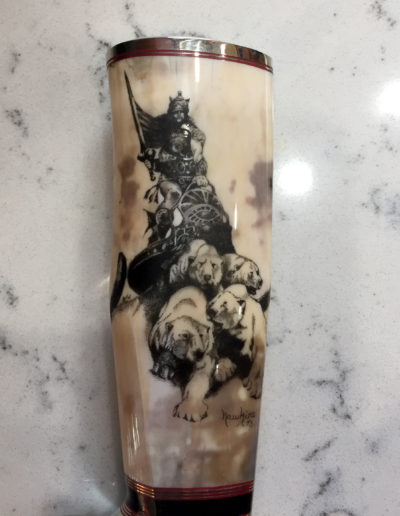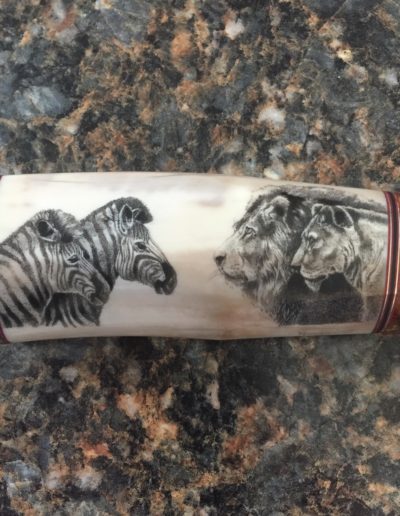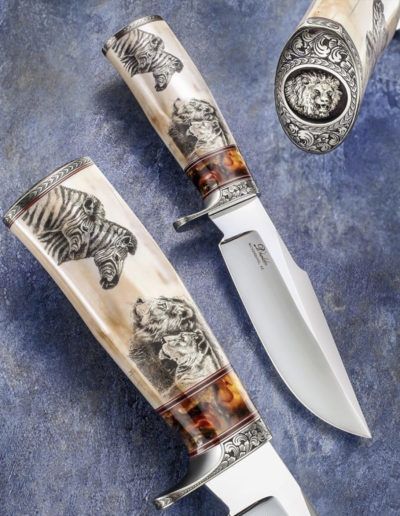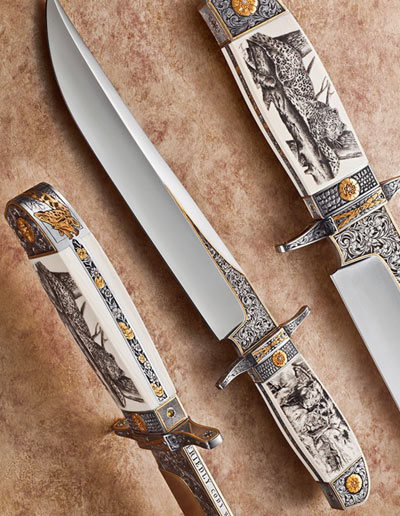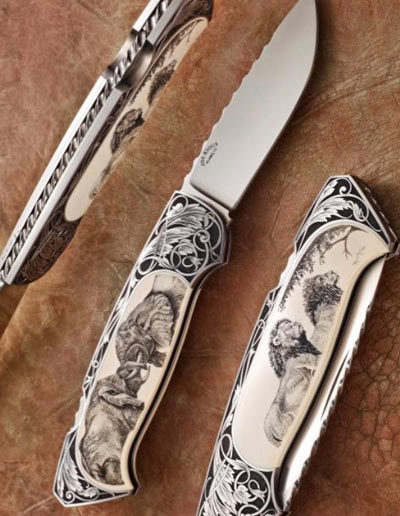Scrimshaw
Scrimshaw is scrollwork, engravings, and carvings done in bone or other alternative materials. Typically it refers to the artwork created by whalers, engraved on the byproducts of whales, such as bones or cartilage.
Scrimshaw essentially was a leisure activity for whalers. Because the work of whaling was very dangerous at the best of times, whalers were unable to work at night. This gave them a great deal more free time than other sailors. A lot of scrimshaw was never signed and a great many of the pieces are anonymous. Early scrimshaw was done with crude sailing needles, and the movement of the ship, as well as the skill of the artist, produced drawings of varying levels of detail and artistry. Originally, candle black, soot or tobacco juice would have been used to bring the etched design into view. Also ink was used that the sailors would bring on before the voyage. Today’s artists use finer tools in various sizes.
Following the restrictions of the Endangered Species Act as well as The Marine Mammals Protection Act today’s modern scrinshanders work also with alternative materials such as white micarta mother of pearl and ancient Mastadon tusks( 10,000 to 40,000 )years old……
It is a simple process, a substrate is selected and polished to a high gloss finish. A small cartoon is drawn onto the substrate using a soft graphite pencil. Every scrimschander has their own technique to produce the drawing onto the substrate some use the bulino style ( a series of dots ) some use thin lines while others use a combination of both . Once the engraving is complete it is time to color in the image, using a artist specific ink it is rubbed on the surface and then lightly cleaned off and the image is left in the “scratches” thus producing the desired effect.

